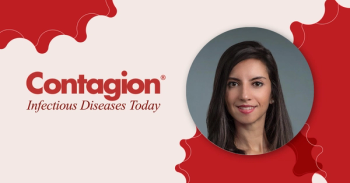
Phage and Antibiotic Combination Therapy for Biofilm-Associated Bacterial Infections
Ashlan Kunz Coyne, PharmD, MPH, discusses the potential of combining antibiotics with phage mixture therapy in treating these types of infections.
Biofilm-associated bacterial infections create a host of clinical management difficulties, including high resistance to antibiotics, difficulty in diagnosing, and evasion of the immune system.
One area of study that seems to be gaining traction in this area is to consider combination therapy using traditional antibiotics and phage mixtures (more than 1 phage) to treat them.
“With biofilm infections, you have the bacteria embedded in an extra layer or matrix of other material, so you need some sort of therapeutic regimen that's going to be able to actually get to the bacteria,” said Ashlan Kunz Coyne, PharmD, MPH, assistant professor at the University of Kentucky College of Pharmacy in Lexington. “So the phage has demonstrated antibiofilm activity. And then when we put phage in, in addition to antibiotics, whether it's a single antibiotic or antibiotic combinations, you see where that combination can actually penetrate the matrix, access the bacteria, and have bactericidal activity.”
Kunz Coyne has done studies in this area and presented on this topic at
“With just the antibiotics alone, you get enhanced activity. But what we see in the models is when you're dealing with the biofilm-associated infections, by adding at least one phage, in some situations, maybe a phage cocktail, you get the additional enhanced killing throughout the model and you also get prevention of antimicrobial resistance,” Kunz Coyne said.
Phage Access Challenges
And in terms of where we are now with using phage and antibiotics for combination therapy, Kunz Coyne believes medical science has embraced it but that a major challenge remains: access to phage.
“We have the struggle right now with you've gone through all the options with a patient—mono-, combo, triple therapy—and the patient's not clearing the infection, and institutions are unable to get a phage. So it's all about access to phage. That's the issue right now,” Kunz Coyne said.
“The general timeline for phage, from, let's say, when you want it to when you actually get it, is upwards of 6 months,” she said. “So does your patient have 6 months if you're out of other options is a big thing. The only way you can get phage right now in the United States is if you're enrolled in a clinical trial or if you go through the compassionate use process. So just additional hurdles for people to have to go through, and sometimes your patients just don't have that time or opportunity.”
She said the ideal situation for phage mixtures would be easy accessibility for patients.
"Can we put a bunch in a container at some point—when it's FDA approved—put it on the shelf, and then when we need it, can we have a higher likelihood that we have a cocktail ready that's going to hit the patient's strain of bacteria? That would be the pipe dream."
Reference
1. Kebriaei R, Lev KL, Shah RM, et al. Eradication of biofilm-mediated methicillin-resistant Staphylococcus aureus infections in vitro: bacteriophage-antibiotic combination. Microbiol Spectr. 2022;10(2):e0041122. doi:10.1128/spectrum.00411-22
Newsletter
Stay ahead of emerging infectious disease threats with expert insights and breaking research. Subscribe now to get updates delivered straight to your inbox.





















































































































































































































































































